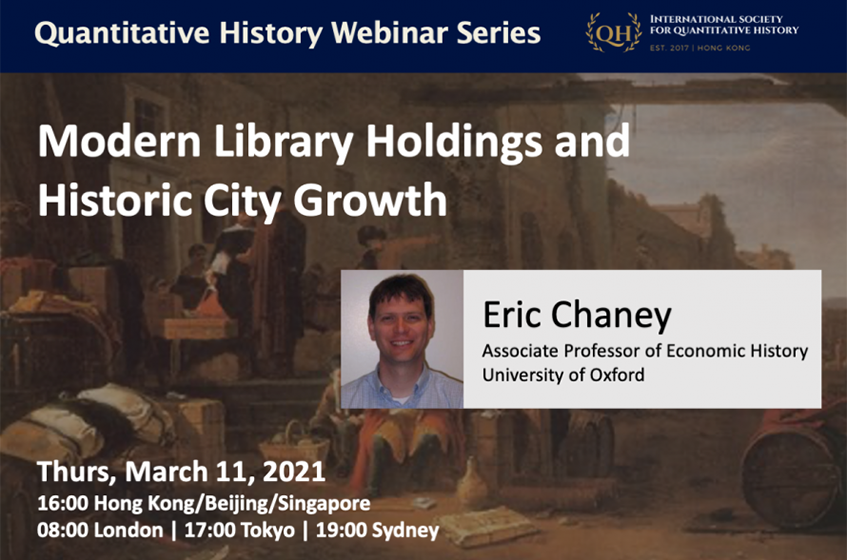
Modern Library Holdings and Historic City Growth
Modern Library Holdings and Historic City Growth
Estimates of historical city sizes underpin our understanding of long-run economic development. For example, changes in urbanization rates are often used as a proxy for the evolution of economic prosperity in the past. Despite the widespread use of this proxy, researchers lack city size estimates for many historical regions. In search of a new proxy for pre-industrial economic activity, Eric Chaney of Oxford University has been working on a study that supplements over 30 million records from the union of the world’s largest library collections with 20,000 historical Islamic biographies. Changes in the number of authors affiliated with a city are found to be strongly correlated with existing growth estimates, providing a high-frequency measure of urban development. A statistical approach rooted in Stein’s Paradox exploits this correlation to improve upon existing city size estimates. In this Quantitative History Webinar, Eric will explore how the data is used to revisit urban growth during the rise of the Atlantic trade and to investigate the impact of the Mongol invasions on the Eastern Islamic world.
Live on Zoom on March 11, 2021
16:00 Hong Kong/Beijing/Singapore
08:00 London | 17:00 Tokyo | 19:00 Sydney
Calculate your local time
The Quantitative History Webinar Series, convened by Professor Zhiwu Chen and Dr. Chicheng Ma of The University of Hong Kong (HKU), aims to provide researchers, teachers and students with an online intellectual platform to keep up to date with the latest research in the field, promoting the dissemination of research findings and interdisciplinary use of quantitative methods in historical research. The Series is co-organized by the International Society for Quantitative History, HKU Business School, and the Asia Global Institute (AGI).
Conveners:
Professor Zhiwu Chen
Dr. Chicheng Ma







